Ideas and issues on design process, design policy, design and politics.
“THE only function of economic forecasting is to make astrology look respectable.”
Noted economist, John Kenneth Galbraith.
Economists make bad urbanists
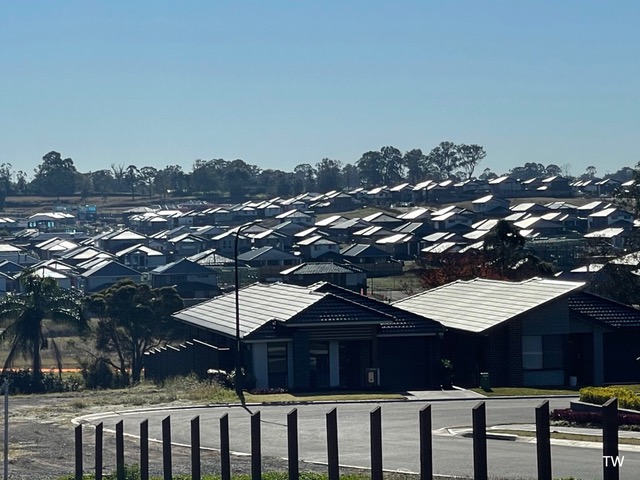
The housing crisis has brought economists to the fore in commentary, if only to demonstrate their complete lack of understanding of urban planning. It’s appalling to fail to account for the triple bottom line, to think that numbers are data, and that we live in an economy, when it’s actually a society.
If only economists could learn that housing is about homes, not property, they would understand a lot more; and a quick check with urban planners might rectify 3 issues they’ve got the wrong way round.
The problem is housing supply?
With 9.3m households and 10.9m dwellings, Australia doesn't have a housing supply problem; it has a distribution problem. The issue is a glut of second homes, holiday rentals and vacant houses. Redistributing them equitably is far too big a political problem (only those darstardly Greens want to raise), so the political centre-right talks endlessly about a supply problem, with the backing of building and property industries, but they would say that wouldn't they?
Planning is to blame for the failure to supply?
Notwithstanding the above, various economists (in The Conversation) and politicians (Rose Jackson on ABC Q&A) allege that planning is preventing houses being built to meet supply targets. It’s a nonsense second order issue. The real problem is a shortage builders, not red tape from planners. Australia can only build the number of houses it does because of the size of the building industry.
Let’s say we rezoned the entire outskirts of every city and town and gave every developer as many sites as they want - we would still only build the same number of houses we do now. And it gets worse. At a time when builder’s numbers should be expanding, they’re shrinking. Going bankrupt, sub-contractors in short supply and material prices going up. Until we have an industry to build the 250,000 houses per annum that’s supposedly needed (currently 170,000) it’s not a planning problem.
We should build at the fringe?
Various economists, notably Alan Kohler in a Quarterly essay, have argued the best place to expand supply is at the fringe. But an Infrastructure Victoria report shows that intensifying housing in the ‘missing middle’ suburbs has far less infrastructure costs and makes better use of the existing services. A mathematical model fails when it meets the societal model. Also, Kohler went on to advocate for fast trains to the CBD, where on 15% of employees work. Any urbanist would have edited out that nonsense.
Making or faking solar panels.
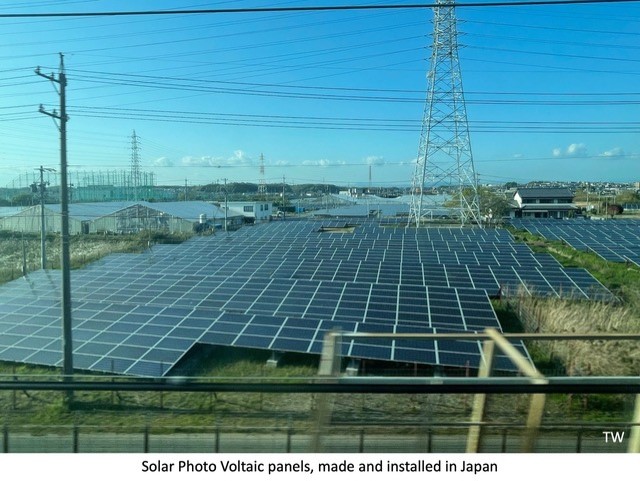
PM Albanese had another misdirected thought bubble, this time about manufacturing solar panels in Australia. He's right to lament the fact that the UNSW developed high performance solar panel, only for one of its graduates to return to China and establish the business model that makes 99% of the world's solar panels. So John Howard’s Australia missed out, but that ship has sailed.
The idea is to establish a new manufacturing industry in the Hunter Valley, the heart of dying coal country, by spending $1 billion. So Albo and 5 ministers took two planes to get to the announcement. Talk about a tin ear on the environment.
Unfortunately the world has a glut of solar panels at the moment, since China spent $300bn expanding this business in the last two years. There will be no demand for high-labour-cost Australian-made panels unless a tariff of 50 to 100% percent is imposed. The $1bn would be far better directed into building homes, fitted with Chinese-made solar panels. All points well made in an article by the aforementioned Alan Kohler (on firmer ground).
Drawing a line in Saudi Arabia
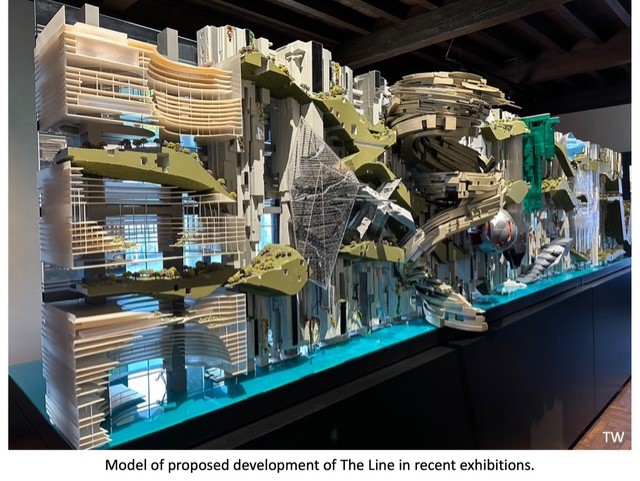
When fixing existing problems becomes too hard, you wipe the slate clean and start again. So it is with a proposal to build mega-cities, including The Line in Saudi Arabia. It's captured some public attention with an article in the Good Weekend Magazine of The Age and the Sydney Morning Herald. But they fail in three big ways.
One, existing cities, with all their infrastructure and services, are where we should be building better housing and businesses. Two, taking petro-dollars to build and operate something so highly carbon-intensive, is a doubling down on fossil fuels.
, and three, it's promoted by a regime notorious for its autocracy and murder.
The article highlighted many of the people from Australia that are involved (of the 80 nationalities involved only the Saudis and GB have more than Australia): architects including Woods Bagot, McGregor Coxall, and LAVA (Laboratory for Visionary Architecture), filmmaker Baz Luhrmann, entrepreneurs Michael Lynch (ex-Sydney Opera House) and Andrew McEvoy (ex-Tourism Aust), ex-politicians Andrew Stoner and Wyatt Roy, developer Denis Hickey (ex-Lend Lease).
The derision shown by sustainability experts Daniel Barber (UTS) and Philip Oldfield (UNSW) seem entirely warranted. It’s taking the triple bottom line from the sublime to the cor’blimey. Let’s hope for sanity’s sake it’s a doomed venture.
Architecture student fails upwards
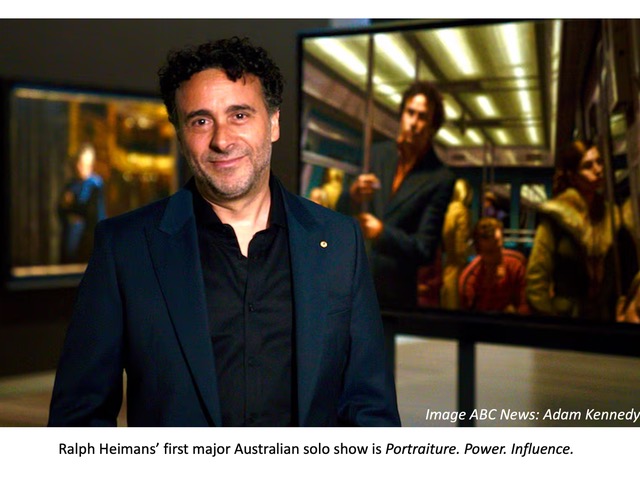
In the late 80s and early 90s I coordinated first year architecture at Sydney University. One of the privileges was bringing in mature age students with mediocre high school scores (called Cat B), as they were inevitably great students. The downside was managing students with high grades that shouldn't be in an architecture course.
Over those 8 years I encountered several of the latter, none more memorable than Ralph Heimans. An early project, to design a city building, was a bit of a disaster. With an ornate, beautifully crafted neoclassical front facade there was nothing on the sides or the interior. When quizzed, Heimans said that only the front was important and it needed to have classical qualities. A gentle discussion followed, and I'm glad to say that Ralph followed his heart and left architecture for a career in painting.
Thirty odd years later and he’s Australia's premier portrait painter and just been accorded an exhibition at the National Portrait Gallery in Canberra. His portraits of Queen to commoners, with superb use of light in the Flemish tradition, and presented with detailed backgrounds, have won him worldwide acclaim. The exhibition runs until 27 May. He’s one that got away from architecture, and I'm glad that he did so brilliantly.
Bookends
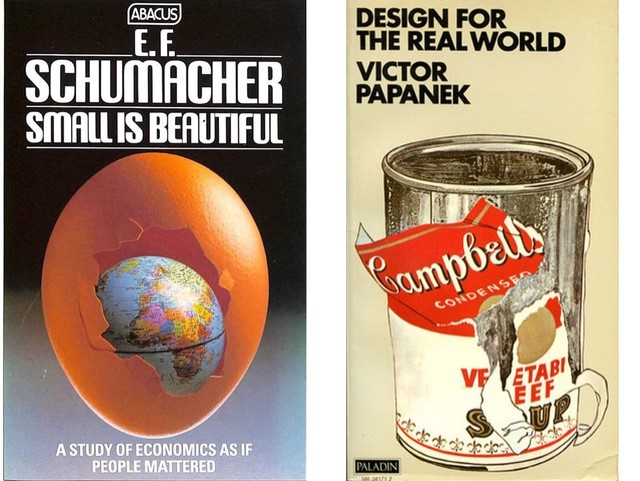
For educating economists (and designers), here’s two books from the past, worthy of revival now. Small is Beautiful, (E.F. Schumacher) is critical (both senses) when gigantic organisations are corrupting our (economic) future. A return to multifaceted micro businesses would be most welcome.
Secondly, Design For The Real World, (Victor Papanek) was the first book to deal with the triple bottom line and design, particularly for social issues. Both urgently need a (re)read.
Signs Off
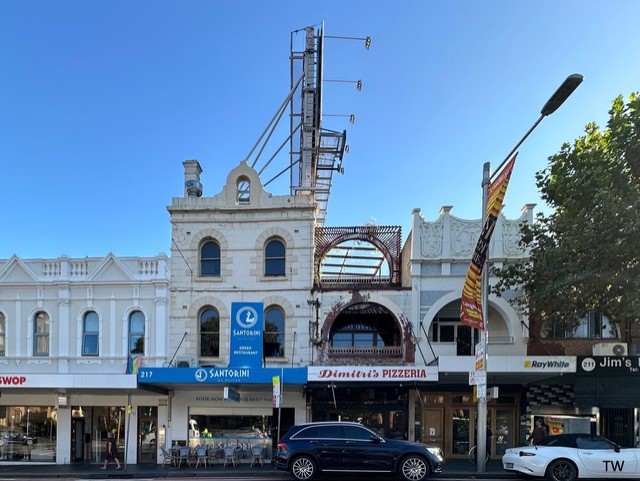
Please tell me, without expletives, how the council that permitted this outrageous sign to be built on top of a shop in Oxford St Sydney, and leased for 50 years, can be the same council that is preventing much needed housing being built on top of these same shops, at a height lower than the sign. Saints preserve us, until the sign, and the council, goes.
Next week
How three storey brick walk-up flats are the past, and the future.
This Design Notes is Tone on Tuesday #203, 9 April 2024, researched and written by Tone Wheeler, architect /Adjunct Prof UNSW /President AAA. The views expressed are his. Past Design Notes and Tone on Tuesday columns can be found here. You can contact TW at [email protected].

